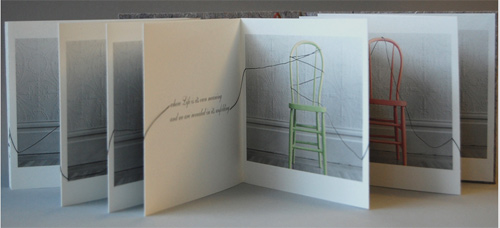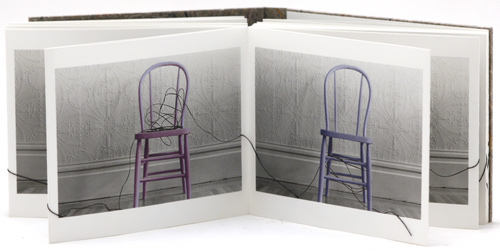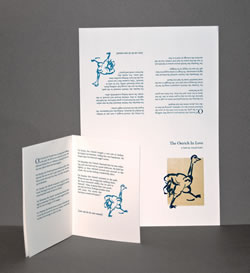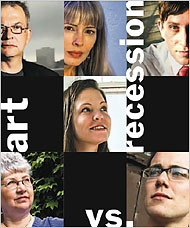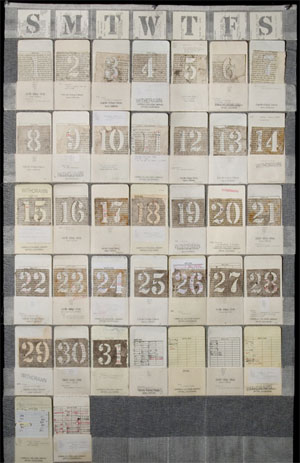 Victoria May is a local artist who mostly does fiber art. Occasionally she makes bookworks too — she belongs to the PCBA and always has interesting things in our member shows (and I’m a push-over for any book with sewing in it). The last time we did a year-end exhibition of calendars, she made the one to the left (called Pocket Calendar, it’s made of Library book pockets, book pages, mull, thread, rust and dirt, and is very large). I also distinctly remember her Ocean Book — while it has no text, the colors and delicacy of it made me think immediately of lapping water.
Victoria May is a local artist who mostly does fiber art. Occasionally she makes bookworks too — she belongs to the PCBA and always has interesting things in our member shows (and I’m a push-over for any book with sewing in it). The last time we did a year-end exhibition of calendars, she made the one to the left (called Pocket Calendar, it’s made of Library book pockets, book pages, mull, thread, rust and dirt, and is very large). I also distinctly remember her Ocean Book — while it has no text, the colors and delicacy of it made me think immediately of lapping water.
 Recently Victoria was the subject of a short documentary shown on Spark, a weekly television show about Bay Area artists and arts organizations produced by our local public television station, KQED. While it’s about her sewn artwork, it’s an interesting look into how she designs and constructs her work.
Recently Victoria was the subject of a short documentary shown on Spark, a weekly television show about Bay Area artists and arts organizations produced by our local public television station, KQED. While it’s about her sewn artwork, it’s an interesting look into how she designs and constructs her work.
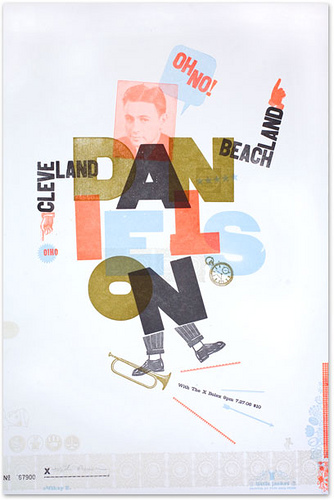 My post earlier this week on an article about letterpress in Forbes and Kate’s comments got me to thinking about my own taste in letterpress posters. The main inspiration for my own wood type collage prints was a lecture I attended where Alastaire Johnston talked about the work of H N Werkman (I have a post about his calendars here). Werkman’s broadsides seem so spontaneous — he printed with anything he could find in his studio, including furniture. But it is definitively sloppy and probably over-inked printing.
My post earlier this week on an article about letterpress in Forbes and Kate’s comments got me to thinking about my own taste in letterpress posters. The main inspiration for my own wood type collage prints was a lecture I attended where Alastaire Johnston talked about the work of H N Werkman (I have a post about his calendars here). Werkman’s broadsides seem so spontaneous — he printed with anything he could find in his studio, including furniture. But it is definitively sloppy and probably over-inked printing.
